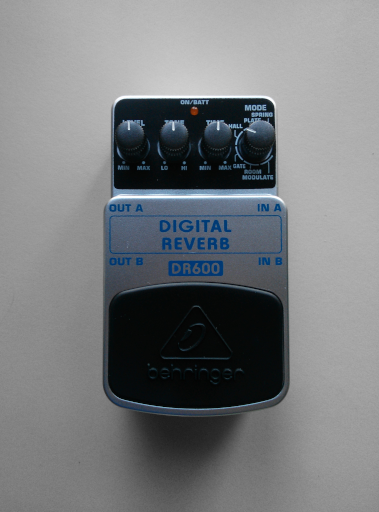Reverb is undoubtedly one of the key basic plugins for music production, but there are some key things to know about it before you go slapping it on every track. There are multiple types of reverb plugins that emulate different types of rooms or represent different ways to artificially add reverb to a track.
Here is a little guitar snippet that I recorded so we can see the differences in each reverb type. This signal was passed through the same effect pedal but the reverb level was set to 0% meaning there was no reverb added.
Here is the Behringer digital reverb pedal that I used to get all these different reverb samples. Of course there are VST, AU, and LADSPA reverb plugins, but this was an easy all in one for me.
The first one I’ll talk about it hall reverb. As the name suggests, it is meant to emulate the sound of a concert hall or theater. Hall reverb often makes the sound go on for a lot longer (long decay time). Hall reverb is often added to strings or pads to add a higher level of richness to them.

This is what that guitar snippet sounds like with a hall reverb at 50% reverb level. (All the rest of the reverb samples have the same reverb level.)
The second key type is a spring reverb. This reverb isn’t meant to emulate a real life place, but it is artificial by design. Spring reverb is often used in guitar amplifiers, making it great for, you guessed it, guitars. This one is characterized by a warm, richness.
This is what that guitar snippet sounds like with a spring reverb.
Another artificial reverb type is a plate reverb. The sounds produced are often bright and clean. This can help cut through the mix more than some of the other types of reverb making it good for vocals and some drum tracks.
This is what that guitar snippet sounds like with a plate reverb.
And last but certainly not least is the room reverb. This type tries to emulate the sound of a smaller room, such as a studio, and produces a more realistic sounding reverb effect. This reverb is great for any track, and is really useful for more up close in your face sounds.
This is what that guitar snippet sounds like with a room reverb.
Have fun experimenting with different types of reverb on your tracks, and don’t feel confined to only using one type of reverb on certain tracks. The key thing to remember with reverb is not to over do it.






